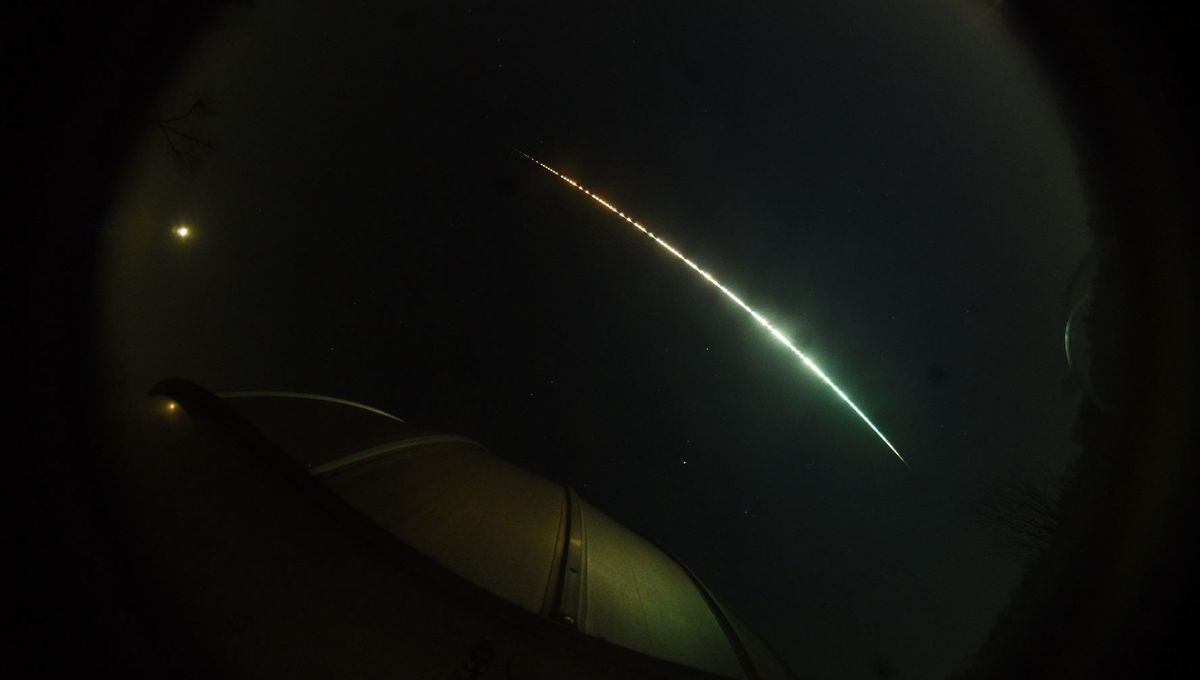
Two years ago, an unusually bright meteor – in lingo a fireball – burned in the sky over the Niagara region. Just hours before, researchers had determined that this asteroid was going to hit our planet. Data from the object in space and as it burned through the atmosphere have allowed it to be characterized, and it is the smallest asteroid on record.
Asteroid 2022 WJ1 made first and final contact with our planet on November 19, 2022. It is now estimated to be an S-chondrite, a class of stony asteroids among the oldest bodies in the Solar System. They are the most common type of meteorite on Earth. What’s record-breaking is its size. Estimated to be 40 to 60 centimeters (16 to 27 inches) in diameter, WJ1 is the smallest known asteroid.
“This is only the sixth asteroid discovered before impact,” co-author Professor Denis Vida, from Western University, said in a statement. “Our new approach, discovering an asteroid through space observation and then subsequently observing it with cameras from the ground, allowed us to confirm that our estimates match well to estimates derived using a completely different approach.”
The NASA-funded Catalina Sky Survey discovered the asteroid on November 18, 2022. Seven minutes later, NASA’s Scout knew that there was a one in four chance that it would impact somewhere between Mexico and the Atlantic Ocean off the coast of North America. Telescopes started to look for it, refining its orbit and allowing astronomers to know where it was going to hit.
“This is only the second time that an asteroid has been meaningfully characterized with telescopes prior to it impacting the Earth,” said lead author Teddy Kareta, a postdoctoral associate at Lowell Observatory.
“It’s a testament to our good luck and preparation, but it’s also due to the community that cares about keeping the Earth safe from these impactors learning to work together better.”
The size of the asteroid was determined by the Lowell Discovery Telescope (LDT) in Arizona and it was tracked over the sky of Canada by Western’s Southern Ontario Meteor Network camera.
“It’s tremendously fortuitous that this asteroid happened to fly over Arizona’s dark skies at night before burning up over Western’s excellent camera network. It’s hard to imagine better circumstances to do this kind of research,” added Kareta.
The early alert serendipitously reached Western physics and astronomy professor Paul Wiegert (who is a co-author on the study) so that he could go and watch the fireball fly above his house at 3:30 in the morning.
“I watched from Brescia Hill on the Western campus. Though cold and windy, the hill had a clear view to the east, where I expected to see only a distant flash. Then the fireball suddenly appeared, passing almost overhead. It was easily visible between broken clouds and noticeably orange-red,” Wiegert said.
Unlike other predicted impacts, like the more recent one over Berlin, no fragments of 2022 WJ1 have been recovered.
A paper discussing the results is published in The Planetary Science Journal.
Source Link: Explosive Fireball Over Niagara Came From The Tiniest Asteroid On Record